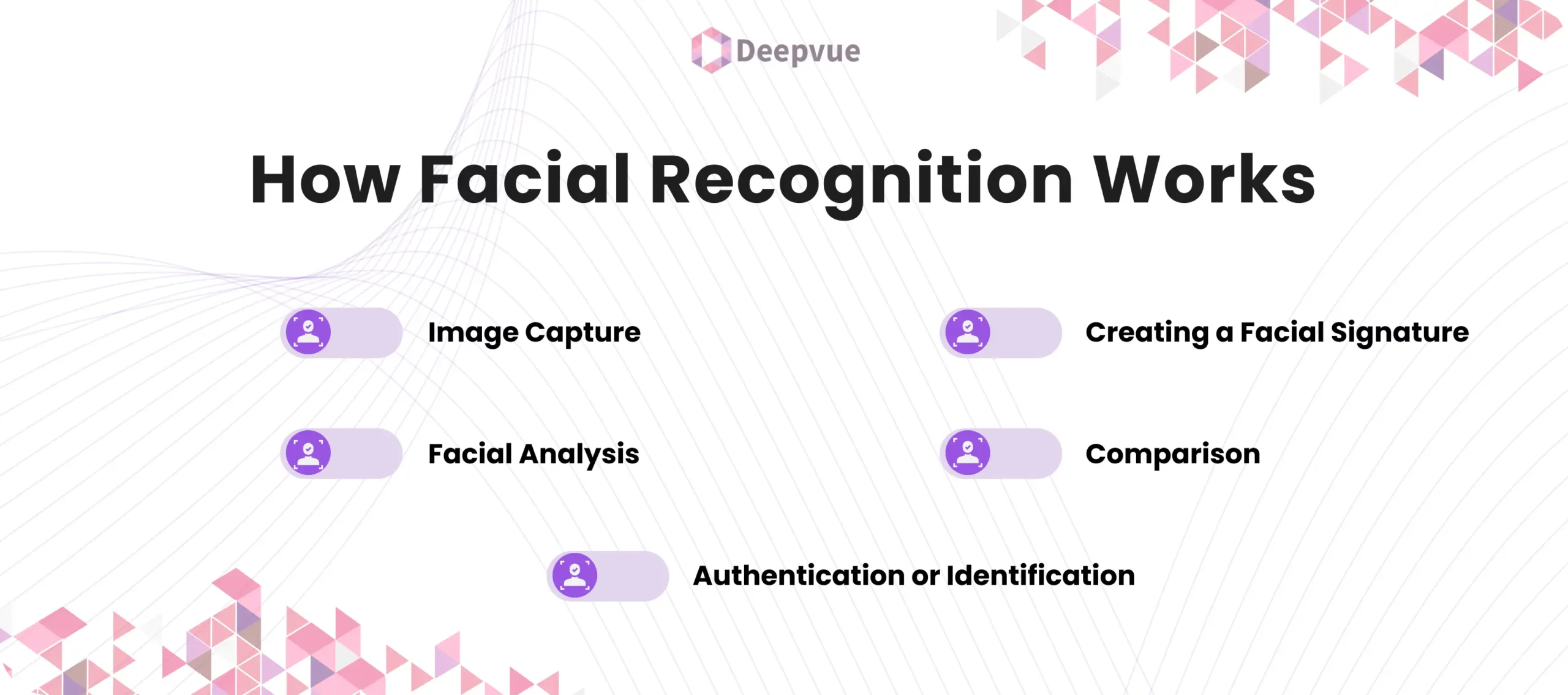Facial recognition technology has become a buzzword in today’s digital age, powering everything from unlocking your phone to advanced security systems. But what exactly is facial recognition, and how does it work? This blog post aims to break down the complex world of facial recognition into easy-to-understand terms, providing insights into its importance and applications.
What is Facial Recognition?
Facial recognition is a biometric technology that identifies or verifies a person’s identity using their facial features. Unlike traditional identification methods that rely on passwords or IDs, facial recognition analyzes the unique characteristics of a person’s face to authenticate their identity. This technology has grown significantly in accuracy and application, making it a vital tool in various industries, from security to retail.
How Facial Recognition Works
Facial recognition technology captures and analyzes various aspects of your face, such as the distance between your eyes, the shape of your cheekbones, and even the contour of your lips. These data points are converted into a unique “facial signature” that the system stores for future comparisons. When you try to unlock your phone or access a secure area, the system compares your face to the stored signature to verify your identity. Here’s the step-by-step process of how facial recognition work –

1. Image Capture:
The first step in facial recognition is capturing an image of the face. This could be through a camera on a smartphone, a CCTV camera, or even a web camera. The image is then processed and prepared for analysis.
2. Facial Analysis:
Once the image is captured, the system analyzes specific facial features. This includes the distance between your eyes, the width of your nose, and the shape of your jawline. These measurements are known as “nodal points,” and there are about 80 such points on a human face that can be analyzed.
3. Creating a Facial Signature:
The facial recognition software then converts the nodal points into a mathematical representation called a “facial signature.” This is essentially a unique code or data set that represents your face.
4. Comparison:
The facial signature is then compared with a database of stored signatures. If the system finds a match, it confirms your identity. This comparison can happen in real-time, making the process almost instantaneous.
5. Authentication or Identification:
Finally, depending on the application, the system either authenticates your identity (for example, unlocking your phone) or identifies you (such as matching your face to a criminal database).
Why is Facial Recognition Important?
Facial recognition technology is more than just a convenient way to unlock your devices. It has a wide range of applications that make it an essential tool in today’s world.
1. Enhanced Security:
Facial recognition adds an extra layer of security, making it harder for unauthorized individuals to access sensitive areas or information. Since it relies on unique facial features, it is difficult to replicate or forge, offering more security than traditional passwords.
2. Improved User Experience:
Gone are the days of forgotten passwords and cumbersome login processes. With facial recognition, users can authenticate their identity quickly and effortlessly. This improves user experience, especially in mobile apps, online banking, and other digital services.
3. Fraud Prevention:
In financial services, facial recognition is used to prevent identity theft and fraud. By verifying that the person making a transaction is who they claim to be, facial recognition technology helps reduce fraudulent activities.
4. Contactless Verification:
In a world where contactless interactions are becoming the norm, facial recognition offers a touch-free method of verification. This is particularly useful in health-conscious environments like airports and hospitals.
Applications of Facial Recognition
Here are some of the key areas where facial recognition is making an impact:
1. Security and Law Enforcement:
Facial recognition is widely used by law enforcement agencies to identify suspects in criminal investigations. It also plays a critical role in securing airports, borders, and other sensitive locations.
2. Retail:
Retailers are using facial recognition to enhance the shopping experience. For example, some stores use it to recognize loyal customers and offer personalized services. It’s also used in loss prevention by identifying known shoplifters.
3. Financial Services:
Banks and financial institutions use facial recognition for secure login, transaction authentication, and identity verification. This reduces the risk of fraud and enhances customer experience.
4. Healthcare:
Facial recognition is being used in healthcare for patient identification and ensuring that the right treatments are administered to the right individuals. It also plays a role in monitoring patient conditions, especially in remote settings.
5. Travel and Hospitality:
From airports to hotels, facial recognition is streamlining the check-in process. Travelers can use their faces as boarding passes, and hotel guests can check in without needing to interact with staff.
How Deepvue.tech Leverages Facial Recognition
At Deepvue.tech, we provide cutting-edge API infrastructure that integrates facial recognition technology into various applications. Our solutions are designed to be easily customizable, making it simple for businesses to incorporate facial recognition into their existing systems. With our technology, companies can achieve faster, more secure authentication processes, improving both user experience and security.
Our facial recognition API is built on advanced machine learning algorithms that ensure high accuracy and speed. Whether you’re a bank looking to enhance security or a retailer aiming to personalize customer experiences, Deepvue.tech’s facial recognition solutions are tailored to meet your needs.
Conclusion
Facial recognition technology is transforming the way we interact with the world, offering a secure, efficient, and user-friendly method of identification. As this technology continues to evolve, its applications will only expand, making it an essential tool for businesses and individuals alike. At Deepvue.tech, we’re at the forefront of this innovation, providing robust facial recognition solutions that cater to modern needs.
By understanding what facial recognition is and how it works, you can better appreciate its importance and potential. Whether you’re looking to enhance security, streamline processes, or offer a better user experience, facial recognition technology is a powerful tool that can help you achieve your goals.
FAQs
What is facial recognition?
Facial recognition is a technology that identifies or verifies a person’s identity using their facial features. This technology analyzes patterns based on the person’s facial details, such as the distance between the eyes, the shape of the cheekbones, and the contour of the lips, to authenticate the individual.
How does facial recognition work?
Facial recognition works by capturing an image of the face, analyzing it, and comparing it with stored facial data. This process includes key steps like image capture, liveness detection to ensure the person is real, and biometric comparison against a database to verify or identify the individual.
Why is facial recognition important?
Facial recognition is important because it enhances security and convenience. It eliminates the need for passwords or physical ID cards, reducing the risk of identity theft. Its applications range from unlocking phones and making payments to securing buildings and verifying identities in various industries.
Is facial recognition secure?
Facial recognition is generally considered secure, especially when combined with liveness detection and advanced AI algorithms. However, the security level depends on the system’s design and implementation. Some systems are more robust and resistant to spoofing attempts, making them highly reliable.
What are the limitations of facial recognition?
While facial recognition is powerful, it has limitations. It may struggle with accuracy in poor lighting conditions, facial obstructions (like masks), or changes in appearance. There are also concerns about privacy and potential biases, especially in large-scale deployments.








